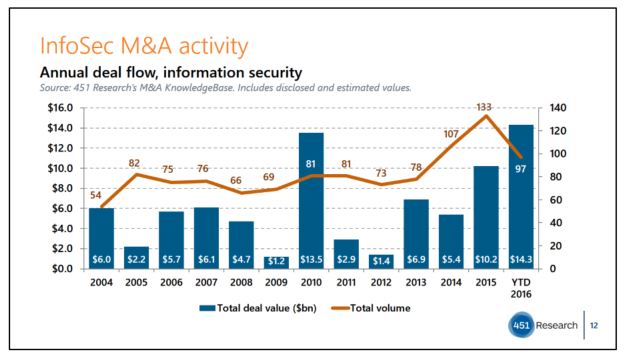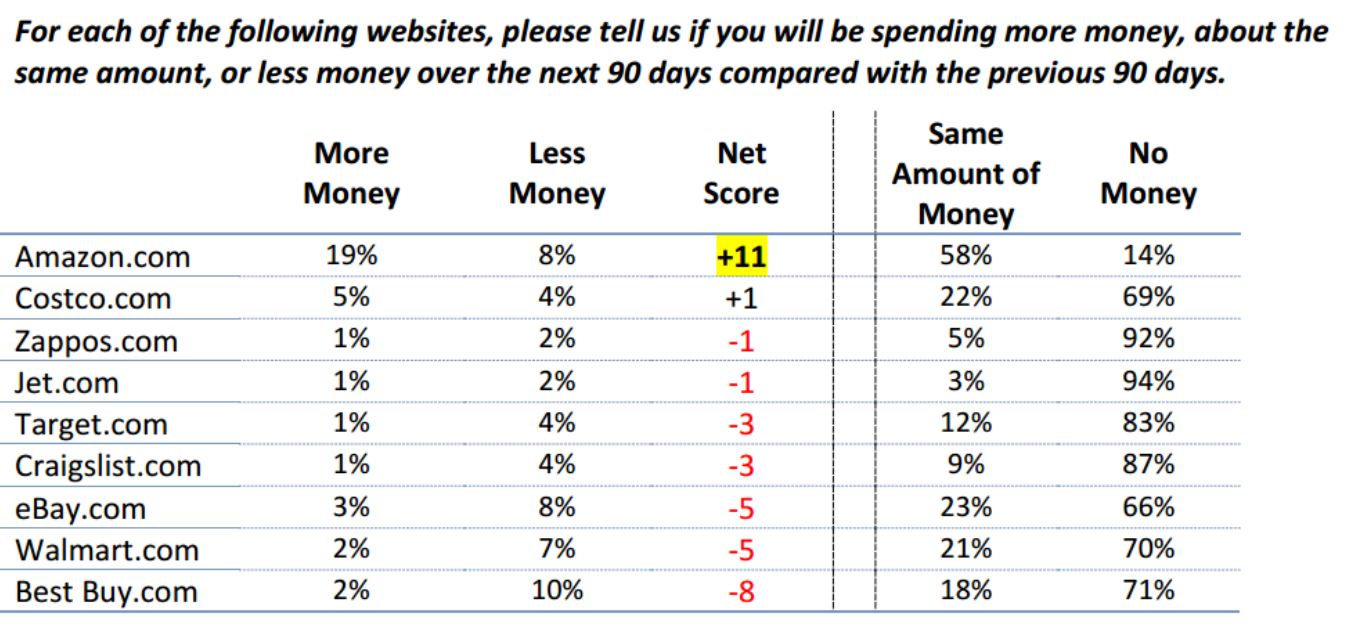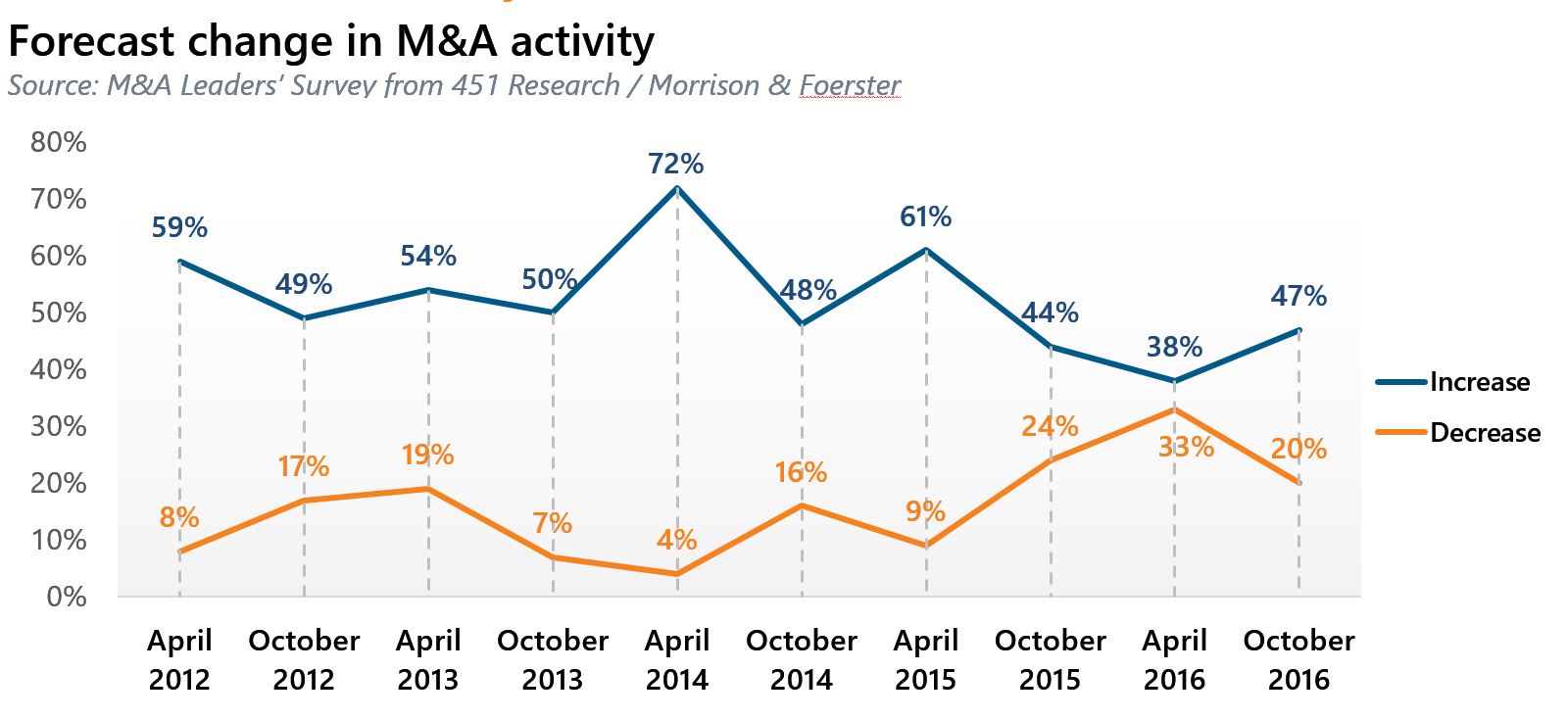contact: Scott Denne
The combination of relatively receptive debt markets and a craving for SaaS vendors has pushed large-cap software M&A to a new high in 2016. According to 451 Research’s M&A KnowledgeBase, there have been 14 software acquisitions valued at $1bn or more, four more than last year and two more than the previous record. Among this year’s big prints, six were SaaS targets, compared with just one for all of last year.
NetSuite’s sale to Oracle tops the list of this year’s software deals at $9.5bn. Oracle’s need to expand its cloud suite into new lines of business and, relatedly, its push into midmarket enterprises drove that transaction. (The purchase by the serial acquirer stands as the second-largest in its history.) Meanwhile, rival Salesforce printed its largest deal with the $2.8bn reach for e-commerce SaaS firm Demandware as it continues to use M&A to extend its cloud beyond its core CRM offering. These two prints, both valuing their targets at 11x, led to a rise in multiples on large software transactions.
We recorded six $1bn-plus software deals that topped the 5x trailing revenue mark this year, triple last year’s total for above-market multiples, according to the M&A Knowledgebase. The median price-to-sales multiple rose to 4.8x in 2016, up from 3.6x in 2015, a year when Permira’s $5.3bn take-private of aging Informatica was the biggest software print. That acquisition was representative of a typical private equity (PE) transaction last year. In 2016, buyout shops dramatically changed their strategies, a key reason for the overall record number of significant software deals.
Like enterprise software’s most celebrated names, PE firms also had an appetite for SaaS – almost one out of three $1bn software transactions this year involved a PE shop buying a SaaS vendor. More striking was their willingness to pay premium multiples for growth companies, some of which didn’t even put up any cash flow. For instance, Vista Equity Partners paid 8x to take both Cvent ($1.7bn) and Marketo ($1.8bn) off the public markets, while EQT paid 6.8x and 5.2x, respectively, for Press Ganey Associates ($2.2bn) and Sitecore ($1.1bn).
Like the PE firms, debt played a part in helping enterprise software giants ink this year’s largest software deals. Oracle sold $14bn in bonds weeks before announcing the NetSuite buy and Salesforce took out a $500m loan to help pay for Demandware. The rising cost of debt in the final months of 2016 could well indicate a lighter year for big-ticket software transactions going into 2017.
For more real-time information on tech M&A, follow us on Twitter @451TechMnA.



